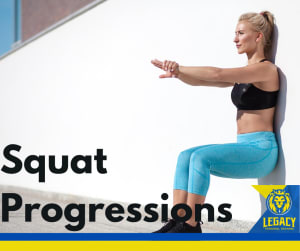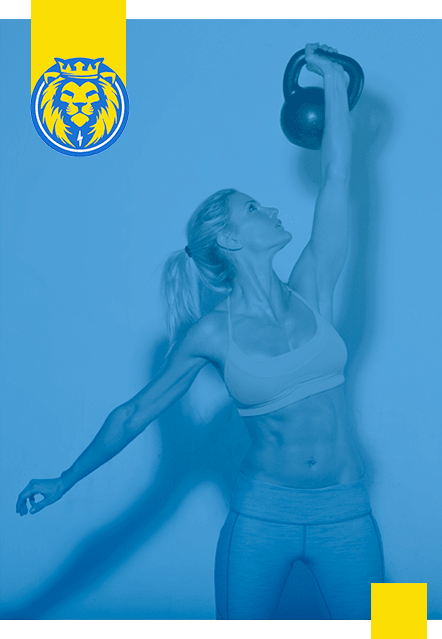
Squat Progressions
When analyzing the squat and scoring each client, there are a few factors which determine where each client will be scored and the level of complexity of the squat assigned to them. These determining factors are posture, depth, and consistency/repeatability of movement execution.
As stated above, depth is the first factor considered. Depth refers to the client’s ability to drop into what we refer to as a “full squat”. While in an ideal world, we would like to see all of our client’s squat until the quadriceps reach parallel with the ground, we understand that each client may face a number of limiting factors which may reduce their squat depth. These factors can range from unfavorable anthropometrics, to limited mobility in the ankles, hips, or even back. Because of these reasons, not all clients are expected to be able to drop to parallel if their conditions do not allow; therefore, the depth of each clients’ squat is scored based on their ability to reach their deepest depth safely, pain-free, and consistently.
The second factor to consider is posture. Posture is the most important factor to consider when analyzing each client’s squat. Posture describes the client’s ability to maintain a neutral spine and correct hip and torso angle throughout all stages of the squat and under every variation of a squat. If a client is unable to maintain correct posture throughout the exercise, they will not progress to a tougher squat variation, regardless of the strength level of the client.
The last determining factor is consistency and/or repeatability. This one is clear cut but no less important than the other factors; we are looking at how consistently can the client execute a full squat; both on a daily and weekly basis, but also set after set and rep after rep. This factor tests the client’s ability to combine the previously mentioned squat traits and execute a “perfect” squat every single session, regardless of the type of squat, repetition volume, and load. If a client can only execute a perfect squat on a semi-consistent basis, they will not reach the highest level of our squat progressions. The most difficult squat variations also carry the greatest risks and potential for injury due to their complexity, it is for this reason that only individuals who can execute perfect mechanics on every repetition will be progressed to the most difficult forms of a squat.
When analyzing each clients’ squat, our coaches mentally take note of each of these key elements of the squat and determine the appropriate starting point for the client through a consensus between coaches. The coach will sequentially consider each of the three factors in order to determine if it is appropriate to progress the client. A case study example of a natural client progression would be as follows: if a new client is unable to maintain proper posture nor proper depth during a squat of any kind, the client will then be regressed to the lowest squat variation. This assigned squat will assist in reaching optimal squat depth while also providing structure to reinforce ideal posture throughout the entire duration of the repetition. Once the time has come where said client can now maintain an ideal posture but still is unable to reach full depth due to any reason, that client will be progressed to a squat which no longer provides a support system for their posture, however it will continue to assist in reaching full depth. After improvements have been made and the client no longer needs a movement which assists them in reaching full squat depth, that assistance will then be removed, and the client is free to squat in inherently more difficult movements due to the absence of depth and postural support. However, the final step is to determine if the client is able to consistently perform the squat the way it is intended, under increasingly difficult conditions. These conditions at the top of our squat progressions tend to be variations in which there is a greater load-capacity placed upon the exerciser, or an element of instability is introduced. Examples of squats where these elements are introduced would be a barbell back squat or a contra-laterally loaded kettlebell squat. These variations require an increased level of core stability and a potential for higher loads. Because of this, the required capabilities of the exerciser are significantly greater.
We encourage our clients to keep in mind that mastery of all forms of squats is very difficult and requires significant time to accomplish. Patience and consistency are required to reach the top end of our squat progressions and because of this, our coaches will always err on the side of caution and will not place any client under a condition for which they are not sufficiently prepared for, regardless of what each client may or may not believe their score/level should be. Intensity while lifting is imperative, however, it will never be prioritized over the safety of each client!

